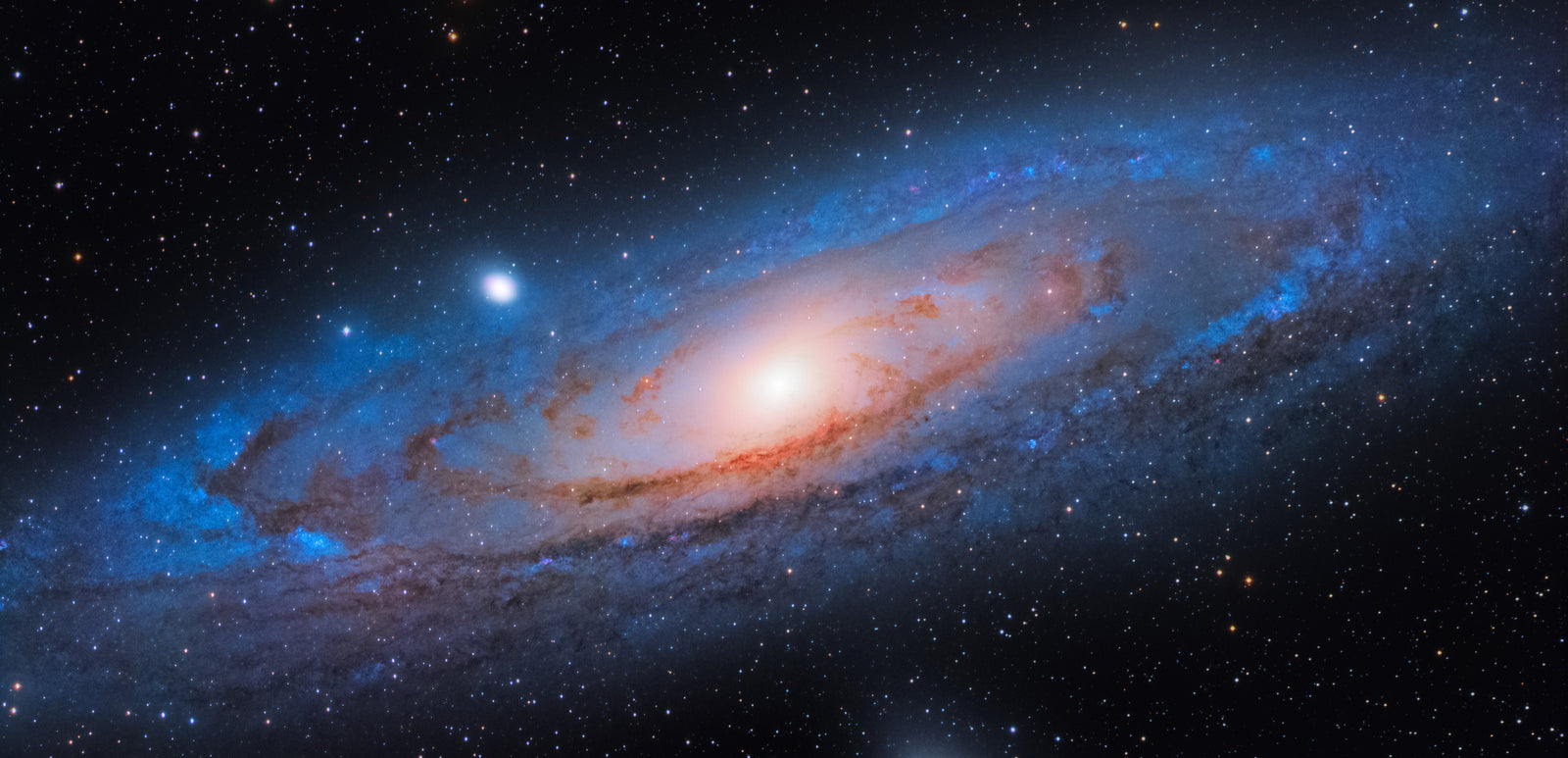The most common type of reflecting telescope the Newtonian design. We call it a Newtonian telescope because it was invented by Sir Isaac Newton in 1668. This simple, effective design was an improvement on the other telescopes of the day because it was easier to manufacture, allowed for a larger aperture than more sophisticated refractor telescopes, which resulted in brighter, more detailed views of the night sky. Newton's design also removed the chromatic aberration, or color fringing that was common in refractors of his time (and is still an issue with today's doublet refractors).
Newtonian telescopes consist of a concave primary mirror and a flat secondary mirror. Light enters the front opening of the telescope, travels past the diagonally mounted secondary mirror, eventually bouncing off the curved primary mirror. The curve of the mirror focuses the light onto the secondary mirror, which sends the image to your eyepiece or your astrophotography camera. Newtonian telescopes don't require lenses like a refractor telescope, though you will likely use a lens to control coma, especially for astrophotography, or to magnify views for visual use.

A Newtonian is a type of reflector telescope. Light is reflected within the telescope, flipping it upside down, just as your bathroom mirror flips images side-to-side. Newtonians typically include a spotting scope, which does not flip the image, helping you find your subject without needing to account for the image flip of the main telescope.
Newtonians feature roughly double the focal length, when compared to their physical length, because they work by reflecting light. Unlike a refractor telescope, which focuses light in a single plane, reflectors are able to fold the light by bouncing it off the primary mirror and secondary mirror. This allows for a greater focal length than the overall telescope length. The compact nature of a Newtonian telescope can be an advantage for those with limited storage space or those that like to take their telescope to their favorite dark sky location for optimal sky conditions.
When using an astrophotography camera and an equatorial mount, you can trade a smaller aperture for longer exposure times. When it comes to visual viewing, aperture is indeed king. This is because, the larger the area collecting light, the brighter and sharper your views will be.
Yes, all reflector telescopes require collimation, and a Newtonian is no exception. Shipping telescopes can cause collimation to shift, as can changes in temperature. We recommend you check collimation before use with a cheshire or laser collimator.
Collimating a telescope is not difficult with the proper tools. All it takes is a collimator and a few minutes of your time to achieve accurate collimation. Check out our blog post on collimating Newtonian telescopes.
Absolutely! Newtonians excel at many types of astrophotography when paired with a computerized equatorial mount and telescope camera. Depending on the focal length you choose, your Newtoinian telescope can excel at wide field, deep space, and even planetary astrophotography.
Keep in mind, the longer the focal length of your Newtonian telescope, the more accurate your tracking needs. So, if you choose to purchase a long focal length Newtonian, you'll need to be extremely accurate in your polar alignment to ensure that your stars stay sharp and round. Better yet, you can get a guide camera, in addition to your telescope camera, which will allow your equatorial mount to correct for any error or drift, so it can maintain accurate tracking throughout long exposures.










